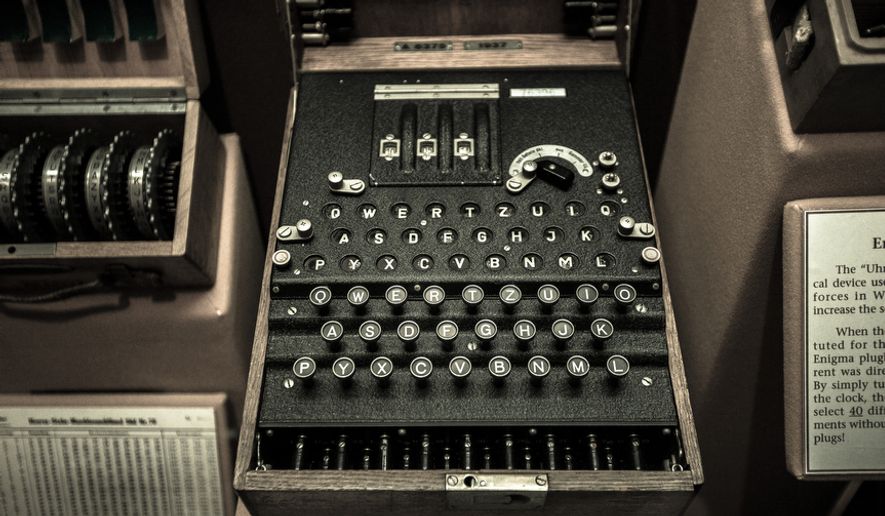FORT MEADE, Maryland — The site of the military’s — and the nation’s — best-kept secrets is now 100 years old.
The hub of U.S. cybersecurity, Fort George G. Meade in Anne Arundel County, Maryland, remains the game-changer in defense that it has been since its inception.
To celebrate, Fort Meade is hosting a public gala Saturday that will include a visual walk-through of its history.
“For 100 years, from saddles to cyberspace, Fort Meade has been the home to Doughboys and Hello Girls of World War One, Patton and Eisenhower as they established our first tank corps, the National Security Agency, and now: US CYBER Command,” Army Col. Tom Rickard, the fort’s garrison commander, said in a statement to The Washington Times. “Through the years, Fort Meade has always been a key installation for our national defense.”
It makes sense, then, that the 5,000-acre fort was named for the Union general who helped win the Battle of Gettysburg, which turned the tide of the Civil War.
Nestled along Interstate 295, the Army base has changed the tide of the Maryland job market. It is the state’s No. 1 employer, with 55,568 employees — nearly twice as many as the Pentagon. Some 138,000 people enter the base daily, and the average household income for the area is more than $84,000.
But the general public, by and large, is unaware of these numbers as the base is squarely tucked away from the busyness of Washington and Baltimore.
Anne Arundel County residents are even astounded by the base’s quiet impact, as well as the sheer number of people moving to the surrounding area.
“I’m amazed when I look at all the housing and infrastructure that’s here now. It’s certainly below the radar, because you can’t just see into the base,” said fort historian Jim Speraw, a museum specialist at the U.S. Army Center of Military History and a resident of the base for 40 years.
“This has become the cybercenter for military, absolutely,” said Sherry Kuiper, the base’s media relations specialist. “Most of the branches of the military have the Cybercom headquarters in this area. The cyberheadquarters for the Marines is building on post as we speak.”
Cyber, however, was not the main focus of the base until 1952, when the electronic eavesdropping National Security Agency set up shop in the fort.
Up to that point, the fort was simply adding innovation to the military, technologically and socially.
World War I brought with it 400,000 troops who passed through Fort Meade, as well as the “Hello Girls” — some of America’s first bilingual switchboard operators for the U.S. Signal Corps who helped forge the path for women in service.
Racial barriers also were broken at Meade during the Great War.
“We had here one of the first black divisions — the 92nd Division,” said Mr. Speraw. “Unfortunately, because of the times, the idea of 22,000 armed black men in one place made people too uncomfortable. So the Army had to train them in several places, but the 368th Infantry and 351st Field Artillery were trained here before they went to France.”
During the Second World War, many of the first women allowed into military ranks, the Women’s Army Corps, eventually were trained at the base. In addition, Fort Meade continued to set precedent by opening a Special Services training school where soldiers could learn the art of entertainment.
Icons such as Jack Benny, Marlene Dietrich and Mickey Rooney made their way through the school, but Mr. Speraw said the first day drove away clarinetist Glenn Miller.
“He came through Meade. But the Army sat him down and told him, ’We’re going to teach you how to play music, son,’” the historian said.
Miller, already proficient, quickly transferred to the Army Air Corps.
Gens. Dwight D. Eisenhower and George S. Patton also established the first tank corps at Meade.
Because of its prime location, members of Congress would come to the fort and watch as personnel rolled out tanks or machine guns that had never been seen before.
“The work they did here was absolutely what our military tank units built off of,” said Ms. Kuiper, the base spokeswoman.
Even the idea for Eisenhower’s creation of the U.S. interstate highway system germinated from his cross-country trip with the base’s trucks, giving the nation a smarter, faster way to travel.
Today, Fort Meade is home to the U.S. Cyber Command, the NSA, the Defense Courier Service and the Defense Information Systems Agency.
“Cyber, of course, is not going anywhere. Who’s not going to have a smartphone or a computer?” Ms. Kuiper said. “This is the future.”
But the details, of course, are closely guarded secrets.
“It’s hard for us to talk about what we do today, obviously. We can’t really know,” Ms. Kuiper said. “We do know that Fort Meade was always progressive, and that’s simply going to continue.”
The gala on Saturday is open to the public, and tickets can be found online. The event will begin at 6:30 p.m. in Club Meade. Ruth’s Chris Steak House will cater, and the U.S. Field Band will perform.
All proceeds from the event will go to the Fort Meade community and toward support of military personnel and their families.




Please read our comment policy before commenting.